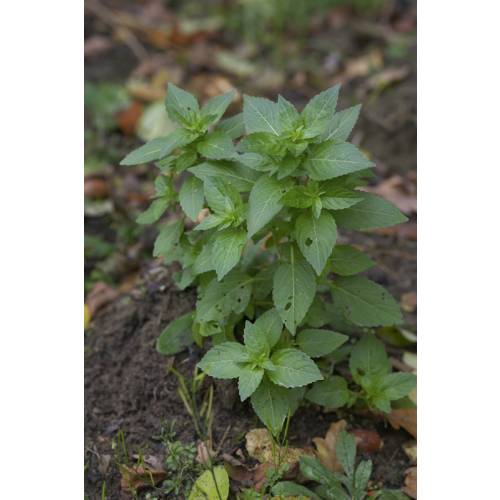
Fight against weeds
Annual weeds
- Details
-
To weed well, you need to know about the different types of weed! On clear soil the first weeds to appear are the annuals, this means that they only live for one season.
Rapid growth
We have all experienced it; you leave a clean bit of land alone and wait: three days later things are already beginning to grow on it although you did not sow anything. The simple fact of exposing the soil to the light will awaken the huge number of seeds that until then were dormant and hidden in the soil. Mustard for example can stay dormant in the soil for several years and then all of a sudden it bursts forth in less than a week! These are the annual weeds, which will occupy the land before giving way to the perennial weeds.
The struggle for light
The peculiarity of annual weeds is their speed of growth; some will flower in under a month. In no time at all they will take over a row of vegetables and submerge very young shrubs and even small trees. Annual weeds steal the light from your other plants. The cultivated plants are plunged into shade, though they need plenty of sunlight to develop. At the base of hedges, the weeds risk growing tall as they search for light. This rapid growth of annual weeds can also hinder young trees, deforming their stems. A young hedge that is lost in a mass of weeds can suffer badly with deformed trunks and a bare base. You need to control the annual weeds quickly.
Quick growth but shallow roots
The first reaction is to give the area a going over with a hoe, to remove as many as possible of the young weeds. You could also try thermal weeding or apply a layer of mulch. However once the annual weeds have started to get a hold, you need to attack their roots.
The easiest ones to get rid off are those with delicate roots, they are plentiful but not very strong. It is easy to pull them out because they posses either a single root going into the ground or numerous fine roots. The annual mercury and euphorbia helioscopia can both be pulled out by hand. Beware of the graminae grasses such as the digitaria which are better removed using a tool rather than pulling because they easily break and will start to form grasses again.
The majority have one main root, which is thick and stuck in the ground. The sow thistles, copodium, ambrosia and the amaranth all belong to this group. It is better to dig the plant out rather than pull it, as the root may break and the plant will grow back even more vigorously than before and be harder to remove!
Into the compost bin!
As long as the annual weeds that you have pulled out do not have seeds, you can put them into the compost bin. They will break down quickly because they have soft tissues. You could even cut them up roughly, leave them to dry in the sun and then use them as a mulch. - Photos (1)

